They’re usually lovingly made and temptingly packaged, but selling local artisan products can be a complicated business. Gaelle Walker offers some pointers
Rich, juicy and sweet with just the whisper of a zesty tang. What could be more delicious than a dollop of local artisan chutney atop your cheese and crackers? Selling hundreds of jars of the scrumptious stuff, of course.
It’s a fact that stocking and selling goods from local and small producers can not only differentiate your store and its range from that of the red and blue Tesco army, but it can also boost average basket spend, and along with it a store’s standing within the community.
Supporting local producers and keeping money within the local economy can only be seen as a good thing, after all. Just ask Mace retailers Phil and Meinir Simpson, who say that the introduction of local goods has helped their Pembrokeshire store to become a real destination, boosting footfall and their profits.
Top tips: Ways to make local work
Get talking The key to the successful retailing of local and smaller producer goods is a watertight relationship between suppliers and retailers and, above all, a crystal clear understanding of what each side expects of the other
Offer a helping hand Be prepared to give up some of your time helping small producers understand the challenges of supplying a retail store such as volumes, time-scales, packaging and labelling requirements
Get vocal Think about how you are going to market your local products to shoppers. Use pos material and signage to highlight them, and explain their story
Manage your expectations Start small at first maybe with just four or five lines, and don’t expect too much initially.
Furthermore, their range of local goods became a lifeline when extreme weather conditions earlier this year prevented some of their larger suppliers from delivering. “During the snow last year I was able to pick up stock such as bread and milk from our local suppliers, meaning that we didn’t suffer such a dent in profits and our customers didn’t lose out,” Phil says.
Similarly, those retailers with close links to their local flower suppliers came up smelling of roses when national supplier Flowerfete went into voluntary creditors’ liquidation on February 18, leaving many bloomless on Valentine’s Day.
And the best bit about stocking goods from small and local suppliers is that demand from shoppers is so keen. The number of shoppers specifically buying local food has doubled over the past five years from 15% to 30% in 2010, according to IGD and, luckily for entrepreneurial independent retailers, that appetite shows no signs of abating.
But before you pull on your wellies and head to the nearest farm, there are a few things you need to take on board. While the products might be homespun, getting them right in-store is actually a complex operation.
Retail marketer and local food expert Stephanie Rice says the process should start with your customers, and what they want from your store. Talk to them and, if you have it, look at your epos data. What sells well in your store? If it’s all about promotions, then maybe artisan products which generally command higher price points aren’t the answer for you.
If, however, you feel that there is a space for local in your store it’s time to get talking, because the key to the successful retailing of local and smaller producer goods is a watertight relationship between supplier and retailer and, above all, a crystal clear understanding of what each side expects of the other.
The past few years have seen the birth of a number of go-between companies which, for a fee, will help establish and maintain relations between the two sides. Distributor Pride of Place brings together a collection of quality smaller and speciality foods from British producers and has recently reduced its minimum order from 20 to 10 cases with carriage paid for most parts of the UK mainland.
Rice and her team at Rice Retail Marketing also act as a broker between passionate British producers and good grocer stores via the Quality From Small Producers (QSP) brand. “The challenge is that retailers and producers are operating in two very different worlds and the two don’t naturally meet,” explains Rice. “Retailers expect small producers to behave like big FMCG brands, and producers are expecting retailers to operate like small delis. Producers can produce brilliantly, but many of them don’t know how to market their goods or understand the constraints that a retailer has in terms of shelf space, ranging, standards, or volumes. For this reason, there needs to be a translation between the two, or the relationship will fail,” she adds.
Independent retailer Vince Maloney has worked closely with Rice to set up the QSP brand and now stocks more than 400 local products at his Budgens store in Ascot. “If you want to do local well, you can’t do it half-heartedly.” he says. “We work closely with our producers to support them in developing their businesses, and as a result we have very strong loyalty from our suppliers who also support us by hosting seasonal food fairs.”
Vince and his manager Steve, who get approached about five times a week by small producers looking to get their goods into the store, have developed a comprehensive information pack including guidelines to help producers get on the right track from the start.
“Many of them don’t have the right mindset at first,” says Vince. “They might have an incredible product, but will only have had experience selling it in small quantities in farmers’ markets with hand-written labels. A convenience store is a whole different ball game. We try to help them get their routines sorted early and help them realise their full potential.”
The most common misconception that small producers have about working with convenience stores, Vince says, is the volumes that will be needed when they go into a retail store. “It’s not like a farmers’ market where they’ll have three weeks to prepare the next batch. Supply needs to be able to match demand, so we teach them about that,” he explains.
However, the hours spent nurturing these small producers is worth its weight in gold once they’re up to speed, adds independent retailer Guy Warner, who has made ‘local’ the star of the show at his five stores in the Cotswolds. “If it’s a great product it’s worth helping them get it ready for market,” says Guy. And he’s talking from experience. Five years ago Guy and his team set about helping an excellent local butcher develop his labelling for the in-store environment a delicate balancing act between communicating the product’s quality local mantle, and complying with the stringent labelling requirements of modern day grocery retailing.
They obviously did a good job, though, because five years on sales are sizzling, and Martin’s Meats has just claimed the top prize at the Heart of England fine foods Diamond Awards for its 28 Day Aged Longhorn Fillet Steak.
The packaging and labelling of artisan products for sale in the busy and highly competitive retail environment is probably one of the biggest hurdles that retailers and small producers need to overcome. When on a convenience store shelf and pitted against a number of other brands, products need to stand out much more than they do on a market stall or farm shop.
Packaging also needs to be more durable. Flimsy plastic wrap might be strong enough for the artistically displayed farm shop shelf, but will perish in an instant in a busy c-store. It’s a lesson that artisan sausage maker David Bell, whose Bangers Galore brand is now stocked in six Budgens stores, including Vince’s, has had to learn.
With the help of Vince and Rice, Bell has recently overhauled his packaging, swapping the old laughing sausage logo that had sold so well in farmers’ markets, for a more sophisticated monochrome design. He’s also invested in a new packaging machine which uses more durable materials to better protect his sausages in the tougher in-store environment.
“It was a really difficult decision to make as I was reluctant to change the design that had got me to where I was at that point,” says David. “I am pleased with it now, though. It looks much more professional. Fingers crossed, the shoppers will agree,” he adds.
So, you’ve got your products sorted and your suppliers are briefed. The next thing you need to tackle is how you’re going to market them to your shoppers.
“Typically, products from small and local producers can be priced between 20% and 40% higher than big-name brands, so you really need to communicate the reasons for this price difference to shoppers,” says Rice. “You need to create a story behind the brand that will explain why it’s different and bring it to life.”
That’s exactly what she and her team at RRM have done with the QSP brand, which via its striking green and blue finger-print logo helps to showcase products in-store. Goods are further supported by eye-catching shelf-edge labelling which tells the story of the men and women behind the products. “Shoppers love to read about the producers it makes the whole experience far more interesting for them,” Vince says.
Signs work well, particularly when you try novel ideas such as miniature chalk boards, but nothing’s better than actually talking to your customers about the products.
The final points to take on board when launching artisan products is to manage your expectations. Start small at first maybe with just four or five lines, and don’t expect too much initially.
“One of the biggest problems is that retailers expect local goods to fly off their shelves from day one and make them loads of money straight away,” says Rice. “It doesn’t work like that. Retailers need to understand that it won’t happen overnight. It’s a process of evolution. Some things will work, others won’t, and you have to keep on reviewing it,” she adds.
The results, if you do, will be impressive, because just like that 28-day aged steak, 12-week matured artisan Stilton or a finely aged whiskey, the good things in life are worth waiting for. n





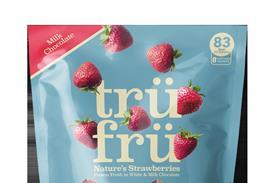













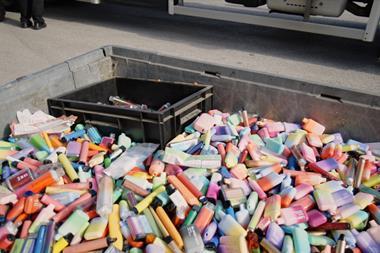
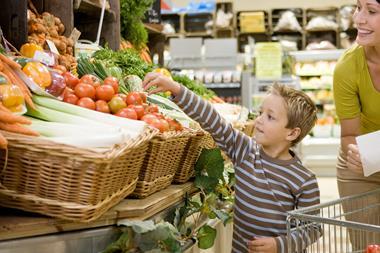
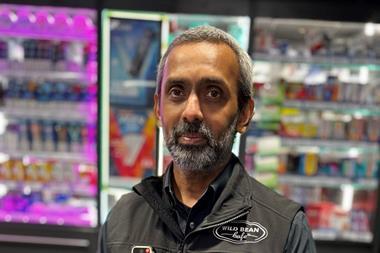




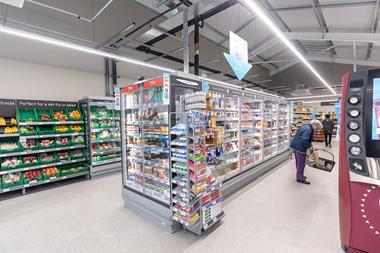
No comments yet